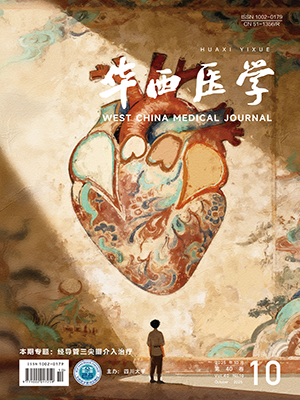| 1. |
Kim JS, Holtom P, Vigen C. Reduction of catheter-related bloodstream infections through the use of a central venous line bundle: epidemiologic and economic consequences. Am J Infect Control, 2011, 39(8): 640-646.
|
| 2. |
Rosenthal VD, Bijie H, Maki DG, et al. International Nosocomial Infection Control Consortium (INICC) report, data summary of 36 countries, for 2004-2009. Am J Infect Control, 2012, 40(5): 396-407.
|
| 3. |
Ling ML, Apisarnthanarak A, Madriaga G. The burden of healthcare-associated infections in southeast Asia: a systematic literature review and Meta-analysis. Clin Infect Dis, 2015, 60(11): 1690-1699.
|
| 4. |
Stevens V, Geiger K, Concannon C, et al. Inpatient costs, mortality and 30-day re-admission in patients with central-line-associated bloodstream infections. Clin Microbiol Infect, 2014, 20(5): O318-O324.
|
| 5. |
Goudie A, Dynan L, Brady PW, et al. Attributable cost and length of stay for central line-associated bloodstream infections. Pediatrics, 2014, 133(6): e1525-e1532.
|
| 6. |
Higuera F, Rangel-Frausto MS, Rosenthal VD, et al. Attributable cost and length of stay for patients with central venous catheter-associated bloodstream infection in Mexico City intensive care units: a prospective, matched analysis. Infect Control Hosp Epidemiol, 2007, 28(1): 31-35.
|
| 7. |
Mayer J, Greene T, Howell J, et al. Agreement in classifying bloodstream infections among multiple reviewers conducting surveillance. Clin Infect Dis, 2012, 55(3): 364-370.
|
| 8. |
Selby LM, Rupp ME, Cawcutt KA. Prevention of central-line associated bloodstream infections: 2021 update. Infect Dis Clin North Am, 2021, 35(4): 841-856.
|
| 9. |
Paioni P, Kuhn S, Strässle Y, et al. Risk factors for central line-associated bloodstream infections in children with tunneled central venous catheters. Am J Infect Control, 2020, 48(1): 33-39.
|
| 10. |
Machat S, Eisenhuber E, Pfarl G, et al. Complications of central venous port systems: a pictorial review. Insights Imaging, 2019, 10(1): 86.
|
| 11. |
O’Grady NP, Alexander M, Burns LA, et al. Guidelines for the prevention of intravascular catheter-related infections. Clin Infect Dis, 2011, 52(9): e162-e193.
|
| 12. |
Gao Y, Liu Y, Ma X, et al. The incidence and risk factors of peripherally inserted central catheter-related infection among cancer patients. Ther Clin Risk Manag, 2015, 11: 863-871.
|
| 13. |
Miliaraki M, Katzilakis N, Chranioti I, et al. Central line-associated bloodstream infection in childhood malignancy: single-center experience. Pediatr Int, 2017, 59(7): 769-775.
|
| 14. |
Vassallo M, Genillier PL, Dunais B, et al. Short-course daptomycin lock and systemic therapy for catheter-related bloodstream infections: a retrospective cohort study in cancer patients with surgically implanted devices. J Chemother, 2017, 29(4): 232-237.
|
| 15. |
Krishnan A, Irani K, Swaminathan R, et al. A retrospective study of tunnelled haemodialysis central line-associated bloodstream infections. J Chemother, 2019, 31(3): 132-136.
|




